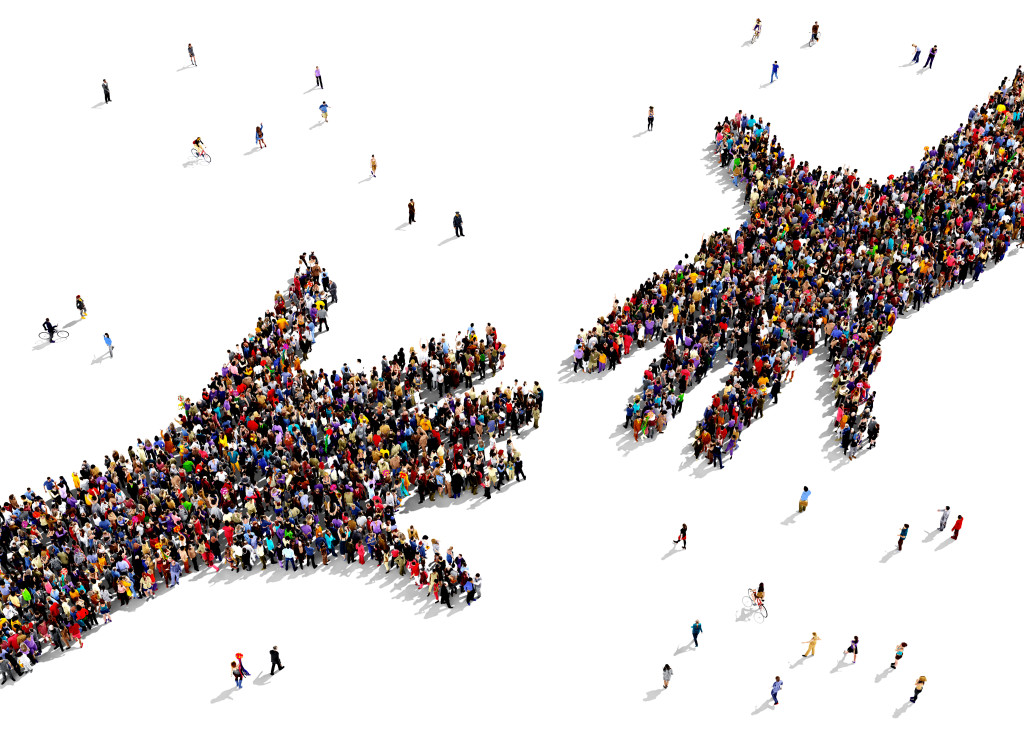
The process of building resilient communities continues to be an ongoing topic of debate. The concept of “resilience” is a cornerstone of international development strategies pursued by non-governmental organizations (NGOs) and governments alike in the Eastern and Western Hemisphere. Although “resilience” has specific and well-established meanings in the fields of ecology and psychology; it means something very different in the international development and humanitarian aid communities. Crises have exposed longstanding difficulties in reconciling humanitarian responses, which focus on the moral obligation to safeguard human life, and pursue long-term improvements of living standards.
During natural disasters, communities tend to face heightened levels of stress and food scarcity. Consequently, people tend to seek help from outside agencies. The question then becomes, “How can we leverage aid while helping communities rebuild their ecosystems through non-volatile markets? Learning from the lessons from past natural disasters, it has been proven that pragmatic approaches must be embraced to reduce market prices during times of need. Methods to allocate food and resources should be chosen to adapt to the changing climate conditions. As a result, relief efforts should ensure communities have access to affordable food at reasonable prices. This further reinforces the social integration of those who are left desolate by major disasters. Through the development of comprehensive public health policies, it increases the portability and access to food resources during post-earthquake recovery efforts. Hence, help should not be provided based on agencies’ vested interests but rather on adapting to the changing circumstances of these affected communities. It also promotes a healthy balance between markets and institutions in relation to marshaling resources in times of disaster and reduce the impact of scarcity.
Public Health policy used in the context of technology and social media engagement thus becomes the tool to assess the far ranging effects of agency decisions to reduce systemic issues. This community- centered approach enables those who are affected to take the driving seat and facilitate the healing and recovery of their communities. When Hurricane Harvey triggered flooding in the Houston Metropolitan area, people relied on social media like Facebook to raise funds and awareness on the areas severely hit by the storm. This prompted emergency workers to remain vigilant and track geotagging locations. Additionally, the creation of MESFAMI Care Inc is one example on how social media can turn stories to capacity-building for communities in vulnerable positions to have access to health services. MESFAMI Care Inc advances the healing process by creating a network of support services for families in vulnerable positions to survive and thrive through life changing events. An example on how digital storytelling and social justice are combined to build resilient communities of Global Storytellers all over the globe is Global Storytelling for Global Development (GS4GD). A platform with the goal to use storytelling as a tool to create and foster social impact globally and serves as a sounding board of social activism and exchange for its storytelling community. These forms of activism foster renewed confidence in individuals to engage and contribute to the well-being of their communities.
Social connectedness is born out of the understanding a community has the altruistic goal to build and lift itself up after a tragedy. But how much is this really possible? When do we leave the resilience triangle and implement it as a paradigm so it becomes a natural part of social connectedness? This can be achieved by delivering consistent messaging across different channels where people would look for help. Connecting people, places and stories through storytelling adds to the social thread of international development. People are more empowered to help one another after a major disturbance in communities in which members are regularly involved in each other’s lives. Building social connectedness can be an important step to expand communication and build networks that include social services, behavioral health, community organizations, businesses, academia, at-risk individuals, and faith-based entities. When all stakeholders are engaged, a system of accountability is formed along with a community where mentorship initiatives are encouraged for the community to learn from successes and mistakes.
Resiliency impacts community health by providing the tools, knowledge and channels on prevention while protecting the well-being of its citizens. Community health, in turn, is impacted by resiliency once these holistic approaches are applied to mitigate unprecedented risks and inform the level of engagement of local, federal and supranational governments to provide post-earthquake efforts vis-à-vis civilians in countries affected by natural disasters. In turn, these community-centered approaches provide us invaluable data that can be translated to restorative and social impact storytelling. As a result, effective public health and resilience strategies can be established by shifting people’s current state to above-threshold conditions through education and the transfer of knowledge to communities; using methods of risk reduction or risk transfer, such as insurance and government safety nets; and changing the underlying system structure so that people can grow their way out of current difficulties.
Technology and effective social media engagement are one of the many means millennial and GenZ generations can use to build more resilient communities while withstanding stress and disasters. Supporting survey administration to survivors on what could be done better during post-earthquake could be strongly encouraged to generate disaggregated data on the effectiveness of recovery efforts for transparent decision-making. This initiative would enable data taken from different sources to be cross-transferred to support community needs in post-disaster crises.
written by Claudia Koerbler & Venchele Saint Dic
Resources & Bibliography
- http://www.iitk.ac.in/nicee/wcee/article/13_124.pdf
- https://www.osha.gov/dts/earthquakes/preparedness.html
- https://www.annualreviews.org/doi/full/10.1146/annurev-publhealth-031914-122829https://www.phe.gov/Preparedness/planning/abc/Pages/community-resilience.aspx


